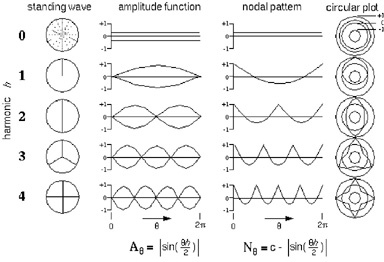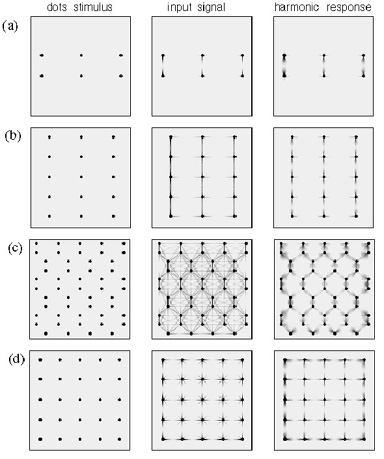
| Back | Return to Beginning | Next |
It turns out that all of these various completions can be explained by a single harmonic resonance model by way of circular harmonic resonances whose various harmonics represent the various vertex types. Unlike the neural receptive field, these resonances are not spatial templates replicated at every location and every orientation, but rather the standing waves emerge spontaneously from the neural substrate at the location and orientation that best matches the given stimulus.

The figure below shows the computer simulations of the Directional Harmonic model, showing how it accounts for all of the various grouping phenomena by way of a single simple model.

| Back | Return to Beginning | Next |